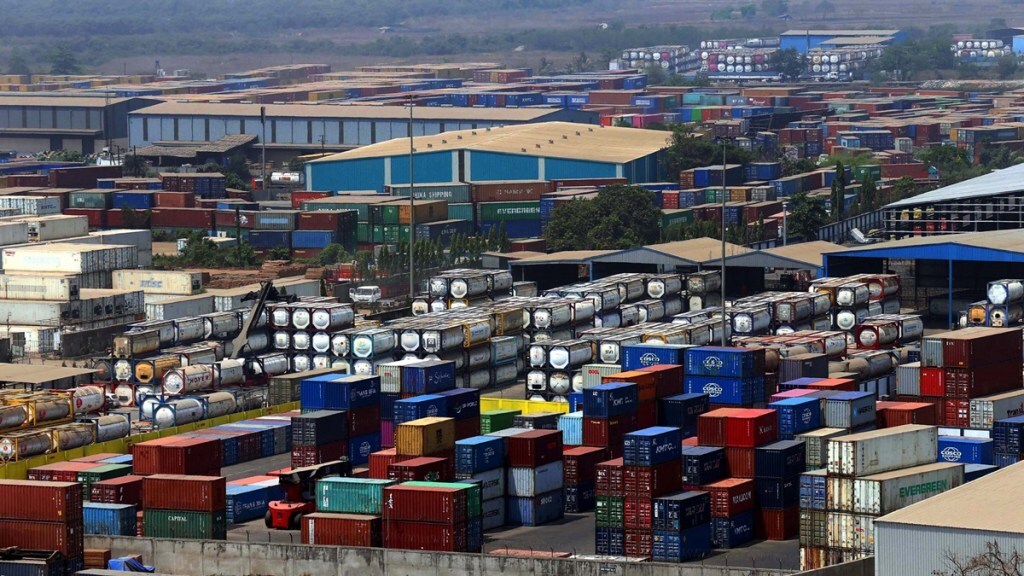India’s total exports — merchandise and services combined — grew 6% to $825 billion in FY25. Much of this was fuelled by a robust 13.6% rise in services exports, which showed broad-based buoyancy. At $387.5 billion, exports of services accounted for 47% of overall exports, 10 percentage points higher than the level seen a decade earlier. In the decade through FY25, India’s services exports grew by an average annual rate of 10.3% and its share in global services exports rose from 1.9% in 2005 to 4.3% in 2023. India has kept pace with the best in “digitally delivered services”. Globally, these have been a big driver of services trade, especially since early years of the millennium — the segment saw average annual growth rate of around 8% in the last two decades. Even though it is being acutely felt that the country must move up the value chain, the tempo may largely be sustained for another few years with relative ease.
However, the trends and prospects for goods shipments suggest there’s much to worry about. These have grown by barely 4.5% per year, in dollar terms, over the last decade; they shrank 3.1% in FY24 and were flat in FY25. Decadal goods exports growth has been below the rate of expansion of not just nominal gross domestic product (GDP), but the real economic growth during the period. Such an export slump can in no way be justified for an emerging market economy. The sluggishness in world trade is no excuse either, as India’s shipments lag even the tepid global rate. In 2024, for instance, the global merchandise trade volume and value grew by 2.9% and 2% respectively, while India was almost simultaneously witnessing a contraction.
With world trade predicted to contract in 2025, the short-to medium-term prospects for Indian exports appear to be quite dim. The country might well see the third straight year of decline in its merchandise shipments in FY26. Any attempt to revive exports must take into consideration the fact that the world is getting into a protectionist groove. Global trade-to-GDP ratio rose from 20% in 1995 to over 30% in 2022, but has since fallen. The near-universal US reciprocal tariffs, if implemented, could raise effective tariff rates to levels not seen in a century. India would do well to forego its conservative approach and reduce tariffs for the US, where domestic vulnerabilities are manageable. This is much required to retain market access to the world’s largest economy that accounts for a fifth of its goods and services exports.
While India could benefit from the China Plus One (C+1) supply chain strategy, this would largely remain a pipe dream, unless major productivity gains are achieved. Concerted efforts must be made to rein in freight costs, cut shipping delays, address shortage of containers, and ease congestion at ports. It is vital to diversity export markets, with greater focus on developed markets like the European Union (EU), where Indian exporters enjoy relatively more pricing power than in Asian countries. The free trade agreements with the EU and the UK, and the pact with the US must have elements to ease India’s onward shipments. Alliances of Indian industry with Japanese, Korean, and European firms must be encouraged to boost tech-intensive manufacturing. A key imperative for exports growth in the current context is to let rupee move more freely to find its real value.

